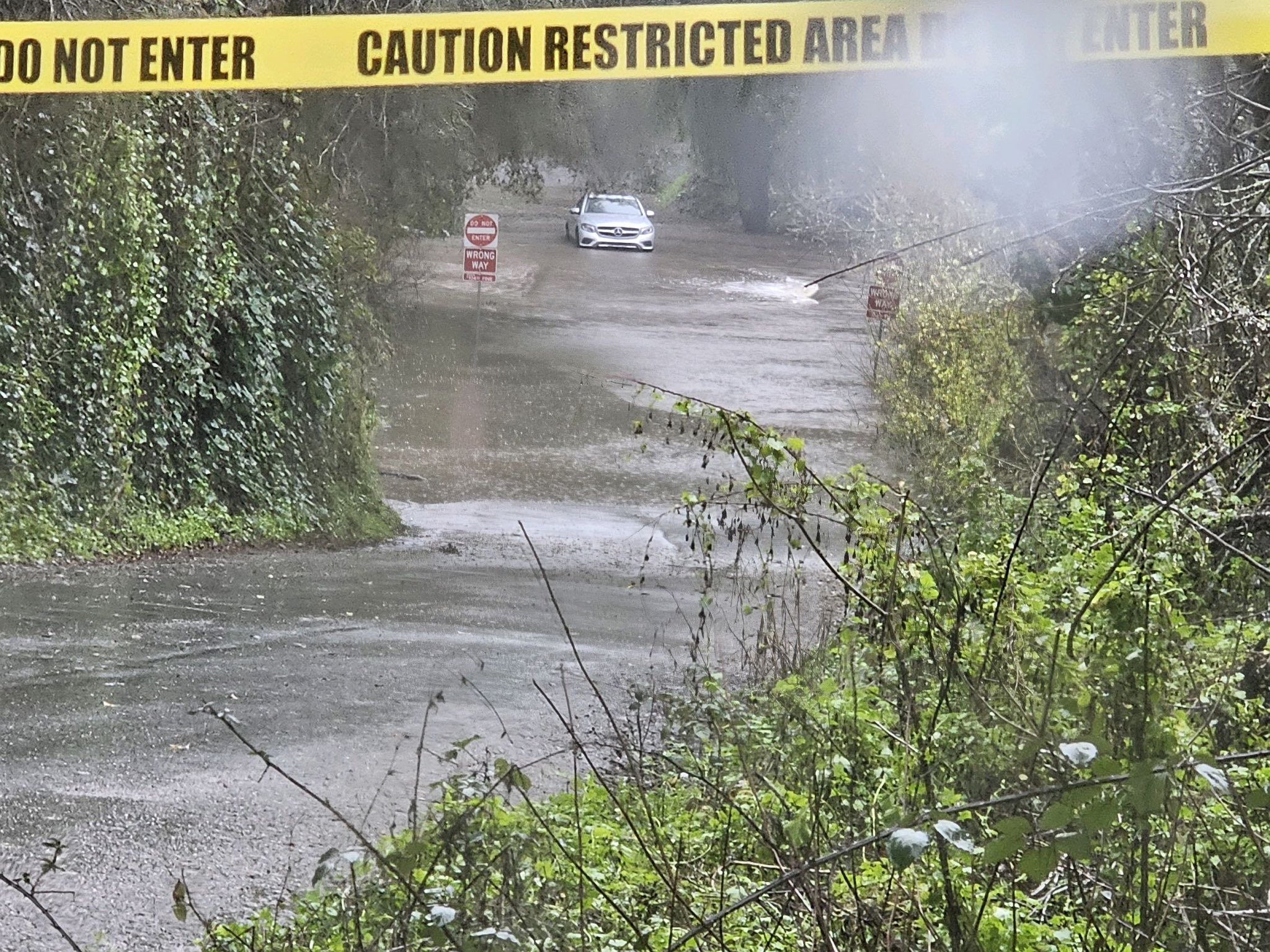What we’re watching: Weekly disaster update, February 5

We know all too well that disaster can strike anytime, anywhere in the world. Some disasters make headlines; others do not. Here at the Center for Disaster Philanthropy (CDP), we monitor the status of disasters worldwide and compile a list of the ones we’re tracking weekly, along with relevant disaster-related media coverage.
Here’s what we’re watching for the week of Feb. 5, 2024.
New or Emerging Disasters
Floods – California: An atmospheric river is bringing heavy rain and high winds to California. The storm left nearly one million people without power the evening of Feb. 4. Parts of Southern California faced the highest level of flood risk as of Feb. 5, and more than 14 million people are under the high-risk level for excessive rainfall. Such high-risk days account for around 80% of all flood damage in the U.S.
Downtown Los Angeles received 4.10 inches of rain on Feb. 4, more than the 3.64 inches average in February. Authorities issued evacuation orders or warnings in parts of Los Angeles, Orange, Ventura, Santa Barbara and Monterey counties. Some have projected that the storm could surpass the effects of a powerful storm that hit in January 2023.
Landslides were reported in Hollywood Hills, and more slides are likely due to the combination of rain hitting already saturated areas and burn scars from past wildfires. California Governor Newsom declared a state of emergency in Southern California on Feb. 4.
Floods – Louisiana: The city of New Orleans and surrounding areas were hit by heavy storms and rains over the weekend of Feb. 3-4 that flooded streets, making roads impassable and sending water into some businesses. Making matters worse was that one of the Sewerage and Water Board’s turbines, which powers the city’s pumps, was taken offline during the peak of the rainstorm “due to a mechanical issue.”
The National Weather Service New Orleans issued a flash flood warning until Saturday evening for northwestern Jefferson Parish, southwestern Orleans Parish and western St. Bernard Parish.
Floods – Philippines: Between Jan. 28 and Feb. 2, a monsoon and a low-pressure system brought heavy rain to the southern part of the Philippines, resulting in floods and landslides in five regions of Mindanao. The National Disaster Risk Reduction and Management Council said in their Feb. 5 situation report that 16 people were dead, more than 812,000 were affected and over 398,000 were displaced.
Drought – Spain: The regional government of Catalonia declared a state of emergency due to a water shortage caused by drought on Feb. 1. Water consumption in the affected municipalities will be limited to around 52 gallons (200 liters) per person per day, including in the Catalan capital Barcelona.
The persistent drought has been ongoing for three years, and the government describes it as the worst in history. While Barcelona’s population has not yet felt the full impact of the drought, people living in small communities that depend on wells have been experiencing difficulties getting water for months as the wells dry up.
Storm – Norway: Storm Ingunn is the strongest storm to hit Norway in more than 30 years. Hurricane-force winds were observed in some areas, and a new national wind speed record of 121.7 miles per hour (195.8 kilometers per hour) was recorded on Feb. 1 on the island of Soemma. The storm tore off some roofs, increased avalanche risks, disrupted transportation and cut power to around 12,000 households.
Wildfire – Chile: A deadly fire that began on Feb. 2 in the country’s Valparaíso region has left at least 1,600 people homeless and burned nearly 20,000 acres (8,000 hectares) of forest and urban land. As of the evening of Feb. 4, Chile’s forensic medicine service said the confirmed death toll was 112 people.
Among the worst affected areas is the city of Viña del Mar, where entire neighborhoods were burned. Unusually high temperatures, low humidity and high wind speeds made controlling the wildfires difficult.
Previous/Ongoing Disasters
Earthquake – Turkey and Syria: On Feb. 6, 2023, a magnitude 7.8 earthquake occurred in southern Turkey near the northern border of Syria, followed by another quake nine hours later. The earthquake, a natural hazard, combined with poorly constructed buildings, weakened infrastructure in Syria after years of war and displaced people living in informal settlements in northwest Syria created the conditions for the disaster.
The result was the deaths of more than 50,000 people, hundreds of thousands of buildings damaged or destroyed across the two countries, and billions of dollars in direct damages. One year on, although some reconstruction has begun and philanthropy has been generous in its response, much of the affected areas are still in ruins. One in three children displaced by the earthquake is still homeless, needs in Syria remain high, and survivors continue to deal with the impacts of the disaster, including the mental trauma.
For more, see our 2023 Turkey-Syria Earthquake disaster profile.
In addition to the disasters listed above, we actively monitor the following disasters or humanitarian emergencies. For more information, see the relevant disaster profiles, which are updated regularly.
- Afghanistan Humanitarian Crisis
- Horn of Africa Hunger Crisis
- 2024 Japan Earthquake
- 2023 Libya Floods
- 2023 Morocco Earthquake
- Palestinian-Israeli Humanitarian Crisis
- Sudan Humanitarian Crisis
- 2024 U.S. Tornadoes
Complex Humanitarian Emergencies – Central African Republic
Many places worldwide are experiencing emergencies caused by conflict, climate change, drought, famine, economic challenges and other conditions that combine to create a complex humanitarian emergency (CHE). CDP maintains complete profiles on several CHEs, and what CDP considers Level 1 CHEs are profiled in this weekly blog post and tracked.
According to the UN Office for the Coordination of Humanitarian Affairs, while the situation has improved in some areas of the Central African Republic (CAR), humanitarian needs will remain high in 2024. Drivers include the consequences of the 10-year conflict, the impact of the war in Sudan and insecurity in the border region with Chad.
2023 marked a decade since a full-scale civil war erupted in CAR. The long-running conflict and subsequent violence have had a significant impact on civilians. A village in the Prefecture of Lim-Pende saw inter-communal violence and acts of violence against civilians on Dec. 21, 2023. At least 22 people were killed, most of them civilians.
One in five Central Africans is either internally displaced or fled across borders due to ongoing violence. An estimated 41% of the population is not eating enough, and the country has one of the world’s highest proportions of critically food-insecure people. Additionally, CAR has seen thousands of people from Sudan seek refuge in the northern parts of the country since the crisis in Sudan began on April 15, 2023.
CARE produced a report on the 10 most under-reported humanitarian crises of 2023 and all ten are in Africa. CAR was number six on the list, with the report saying, “Displacement, food and fuel shortages, limited access to education and violence against women plague the country.”
Join us this Thursday, Feb. 8
Webinar: Beyond breaking news: Local journalism’s role in disaster recovery

What We’re Reading
- What did philanthropy talk about in 2023? Key insights from the 15 most popular Philea Opinion pieces – Philea: The year 2023 was another important one for philanthropy, characterized by growing conversations and awareness around the necessity of shifting foundation practices—key insights related to topics such as systems change, intersectionality and expanding the definition of impact.
- In a neglected part of Afghanistan, foreign aid cuts lead to hard winter choices – The New Humanitarian: “As 2023 wore on, international aid organisations confronted growing concern over who they would be able to assist during Afghanistan’s brutal winter months, with their budgets being slashed due to the global economic downturn.”
- ‘People die like that’: Native Americans face serious barriers in accessing care – Missoulian: “In Montana, where Native Americans comprise 6.7% of the population, Indigenous people die a generation younger than their white neighbors. Experts say inadequate care, food deserts, discrimination at the doctor’s office, harmful U.S. policies, poverty and rurality are among the factors contributing to the crisis.”
Punxsutawney Phil did not see his shadow on Feb. 2, declaring spring would arrive early this year.
